You're the Detective!
Forensic scientists use many different skills to help them solve crimes. Sharpen your detective skills with fun experiments about being a keen observer, breaking codes, collecting evidence, and more. Many experiments include ideas you can use for your science fair, and each chapter ends with a crime for you to solve!
"This series has it all: document and fingerprint analysis tips, ways to hone your detective skills, and facts about bone evidence. An excellent read for aspiring forensic scientists!"
Heather Miller Coyle, PhD, Science Consultant
Professor of Forensic Science
University of New Haven, West Haven, CT
About the Author
Robert Gardner is an award-winning author of science books for young people. A retired high school teacher of physics, chemistry, and physical science, he enjoys writing, biking, and doing volunteer work

Crime scene... forensic evidence... fingerprints... DNA. You probably hear these words often. Forensic science television programs show scientists solving crimes. Perhaps you would like to try it, too! But what is forensic science?
Forensic science is the science used to solve crimes. The findings can be used in court. This means scientists have to be very careful when they collect evidence and investigate crimes. Evidence collected at a crime scene can put a person in jail. But some people have been found innocent and released from prison as a result of forensic evidence. In this book, you will learn about and practice some of the skills used by forensic detectives.
If you have to do a science fair project, doing one about forensic science can be lots of fun. Some experiments in this book are marked with a  symbol. They are followed by ideas for science fair projects. But judges at science fairs like experiments that are creative. So do not simply copy an experiment from this book. Expand on one of the suggested ideas. Or think up a project of your own.
symbol. They are followed by ideas for science fair projects. But judges at science fairs like experiments that are creative. So do not simply copy an experiment from this book. Expand on one of the suggested ideas. Or think up a project of your own.
Scientists try to understand how things work. They make careful observations. They do experiments to answer questions. Nearly all scientists use the scientific method. They (1) observe a problem; (2) form a question; (3) make a hypothesis (a best-guess answer to the question); (4) design and do an experiment to see if the hypothesis is true; (5) analyze the results of the experiment; (6) if possible, form conclusions; (7) accept or reject the hypothesis.
Scientists often share their findings. They write articles telling other scientists about their experiments and results.
How do you begin a project you can use in a science fair? You start by noticing something that makes you curious. So you ask a question. Your question might arise from an earlier experiment, something you saw, something you read, or for another reason.
Once you have a question, you can make a hypothesisa possible answer to the question. Once you have a hypothesis, you need to design an experiment. The experiment will test your hypothesis. For example, suppose your question is Do fingerprints fade away in sunlight? You would place one set of prints in the sun, and one set in the dark. Both sets should be kept at the same temperature, be made on the same surface, and so forth. Sunlight will be the only difference between the two groups.
During the experiment, you would collect data by observing the prints. Does either group of prints start to fade? Does either group begin to change in any other way? You might take photographs of the prints on a daily basis. You would compare the data collected from the two groups over a few days. You might then be able to make a conclusion.
Your experiment might lead to other questions. These questions will need new experiments. Thats the nature of science!
To do experiments safely always follow these rules:
- Always do experiments under adult supervision.
- Read all instructions carefully. If you have questions, check with the adult.
- Be serious while experimenting. Fooling around can be dangerous to you and to others.
- Keep your work area clean and organized. When you have finished, clean up and put materials away.

Image credit: Shutterstock
Detectives at a crime scene wear gloves so that they do not disturb evidence or add their own fingerprints to the scene.
When police reach a crime scene, they first try to help any victims and, if possible, arrest suspects. Then they seal off the area. This prevents any evidence from being removed or disturbed. Soon detectives and forensic scientists arrive. They wear gloves and pull booties over their shoes. This protective gear prevents new fingerprints, footprints, and other bits of misleading evidence from contaminating the crime scene.
- notebook
- pen or pencil
- your home
Forensic teams observe a crime scene very carefully. They take photographs of the scene and any evidence they find. They make detailed notes, measurements, and drawings. They have to be sure of the location of all objects.
A careful search is made for evidence. The evidence might include a victim, a weapon, blood and other sources of DNA, hair, fibers, teeth marks, tool marks, glass, paint chips, bullets, fingerprints, and more. After going over the evidence, a detective becomes a scientist. He or she will form a hypothesis about the crime. The hypothesis must explain the evidence using sound reasoning. But a good detective, like a good scientist, must keep an open mind. A different hypothesis might also explain the evidence. And it might lead to a different conclusion.
Are you a keen observer? Lets find out.
- Look closely at the drawing in .
- Make a list of all the irregular things you observe in the drawing.
- What do you see that suggests a crime took place?
- What additional evidence would you look for and collect?
- When you have finished, compare your list with the one on page 44.

Image credit: Stephen Rountree (www.rountreegraphics.com)
. Is this a crime scene? What observations might make you think it is?
How keen an observer were you?
Suppose a detective observed some of the photographs and other objects in your home. What would he or she know about you and your family?
Design, make, and play a forensic science board game. The game should require observation of clues to solve a crime.
Claire Josephs was murdered in Bromley, England in 1968. There was no evidence of a break-in, and coffee and cookies were on a table. Therefore, police believed Claire knew her killer. While interviewing friends as possible suspects, a detective noticed scratch marks on the hands of Roger Payne, a man that Claire knew. Police decided to investigate further. Using ultraviolet light, they found 61 red wool fibers on one of Paynes suits. The fibers matched those in the dress that Claire Josephs had been wearing when she was killed. Claires raincoat hung on the inside of her front door. Police found 20 rayon fibers on the coat. The fibers matched fibers from Paynes scarf. He had probably hung his scarf over her raincoat. On the floor of Paynes car, police discovered fibers that matched carpets in the Josephses home. They also found bloodstains there that matched Claire Josephs blood type. Payne was found guilty of murder and sentenced to life in prison.

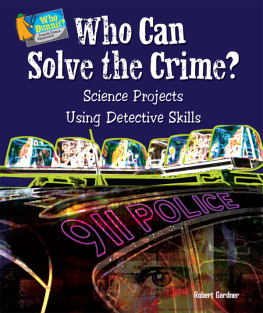


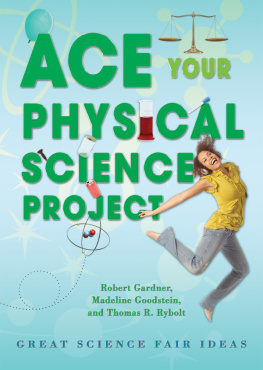


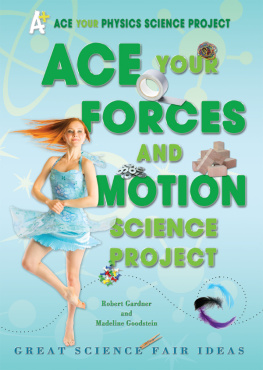
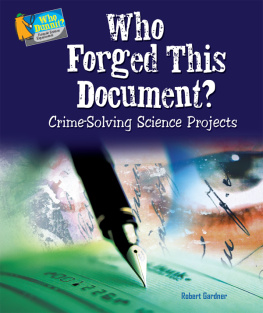
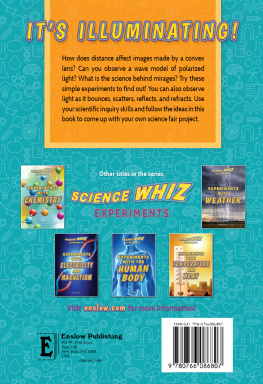

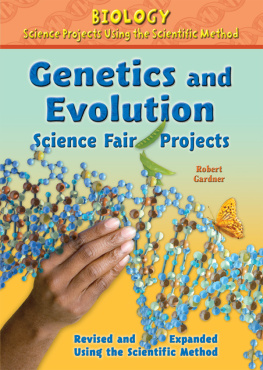
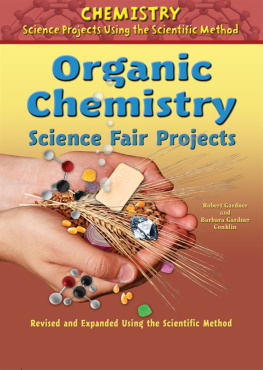

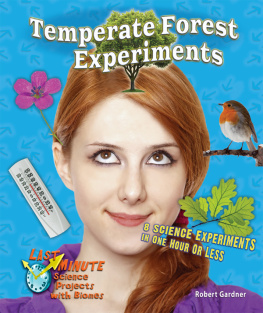
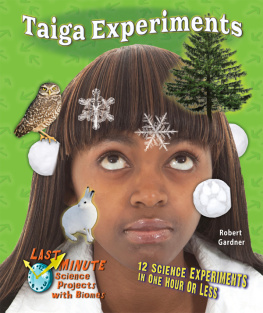

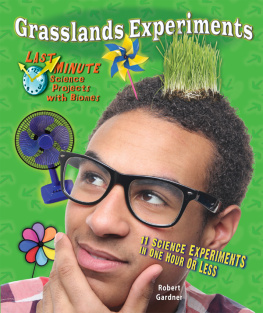


 symbol. They are followed by ideas for science fair projects. But judges at science fairs like experiments that are creative. So do not simply copy an experiment from this book. Expand on one of the suggested ideas. Or think up a project of your own.
symbol. They are followed by ideas for science fair projects. But judges at science fairs like experiments that are creative. So do not simply copy an experiment from this book. Expand on one of the suggested ideas. Or think up a project of your own.
